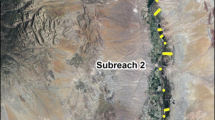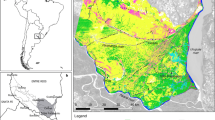Abstract
Over the next half century the human population is expected to grow rapidly, resulting in the conversion of rural areas into cities. Wetlands in these regions are therefore under threat, even though they have important ecosystem services and functions. Many obligate marsh-nesting birds in North America have shown declines over the past 40 years, and it is important to evaluate marsh bird community response to increased urbanization. We surveyed 20 coastal marshes in southern Ontario, Canada, and found that obligate marsh-nesting birds preferred rural over urban wetlands, generalist marsh-nesting birds showed no preference, while synanthropic species showed a trend towards increased richness and abundance in urban marshes. The Index of Marsh Bird Community Integrity (IMBCI) was calculated for each wetland and we found significantly higher scores in rural compared to urban wetlands. The presence of a forested buffer surrounding the marsh was not an important factor in predicting the distribution of generalists, obligates, synanthropic species, or the IMBCI. More isolated marshes had a lower species richness of obligate marsh-nesters and a lower IMBCI than less isolated marshes. Based on our results, we recommend that urban land use is not the dominant land use within 1000 m from any wetland, as it negatively affects the abundance and richness of obligate marsh-nesters, and the overall integrity of the avian community. We also recommend that all existing wetlands be conserved to mitigate against isolation effects and to preserve biodiversity.




Similar content being viewed by others
References
Benassi G, Battisti C, Luiselli L (2007) Area effect on bird species richness of an archipelago of wetland fragments in Central Italy. Community Ecology 8:229–237
Blair RB (1996) Land use and avian species diversity along an urban gradient. Ecological Applications 6:506–519
Bried JT, Ervin GN (2006) Abundance patterns of dragonflies along a wetland buffer. Wetlands 26:878–883
Brown M, Dinsmore JJ (1986) Implications of marsh size and isolation for marsh bird management. The Journal of Wildlife Management 50:392–397
Burbridge PR (1994) Integrated planning and management of freshwater habitats, including wetlands. Hydrobiologia 285:311–322
Carter V (1996) Environmental gradients, boundaries, and buffers: an overview. In: Mulamoottil G, Warner BG, McBean EA (eds) Wetlands: environmental gradients, boundaries, and buffers. Lewis Publishers, Boca Raton, FL
Cohen JE (2003) Human population: the next half century. Science 302:1172–1175
Cosens SE, Falls JB (1984) A comparison of sound propagation and song frequency in temperate marsh and grassland habitats. Behavioral Ecology and Sociobiology 15:161–170
COSEWIC (2000) COSEWIC assessment and update status report on the King Rail Rallus elegans in Canada. Committee on the Status of Endangered Wildlife in Canada. Ottawa. vii +10 pp. (www.sararegistry.gc.ca/status/status_e.cfm)
COSEWIC (2001a) COSEWIC assessment and status report on the Yellow Rail Coturnicops noveboracensis in Canada. Committee on the Status of Endangered Wildlife in Canada. Ottawa. vii + 62 pp. (www.sararegistry.gc.ca/status/status_e.cfm)
COSEWIC (2001b) COSEWIC assessment and update status report on the Least Bittern Ixobrychus exilis in Canada. Committee on the Status of Endangered Wildlife in Canada. Ottawa. v + 10 pp. (www.sararegistry.gc.ca/status/status_e.cfm)
Croft MV, Chow-Fraser P (2007) Use and development of the wetland macrophyte index to detect water quality impairment in fish habitat of Great Lakes coastal marshes. Journal of Great Lakes Research 33:172–197
Crosbie B, Chow-Fraser P (1999) Percentage land use in the watershed determines the water and sediment quality of 22 marshes in the Great Lakes basin. Canadian Journal of Fisheries and Aquatic Science 56:1781–1791
DeLuca WV, Studds CE, Rockwood LL, Marra PP (2004) Influence of land use on the integrity of marsh bird communities of Chesapeake Bay, USA. Wetlands 24:837–847
Donaldson MR, Henein KM, Runtz MW (2007) Assessing the effect of developed habitat on waterbird behaviour in an urban riparian system in Ottawa, Canada. Urban Ecosystems 10:139–151
Findlay CS, Houlahan J (1997) Anthropogenic correlates of species richness in southeastern Ontario wetlands. Conservation Biology 11:1000–1009
Forman RTT, Alexander LE (1998) Roads and their major ecological effects. Annual Review of Ecology and Systematics 29:207–231
Gamble LR, McGarigal K, Jenkins CL, Timm BC (2006) Limitations of regulated “buffer zones” for the conservation of marbled salamanders. Wetlands 26:298–306
Gibbs JP, Melvin SM (1993) Call-response surveys for monitoring breeding waterbirds. The Journal of Wildlife Management 57:27–34
Hanowski JM, Danz NP, Howe RW, Regal RR, Niemi GJ (2007) Considerations for monitoring breeding birds in Great Lakes coastal wetlands. Journal of Great Lakes Research 33:245–252
Haskell DG, Knupp AM, Schneider MC (2001) Nest predatory abundance and urbanization. In: Marzluff JM, Bowman R, Donnelly R (eds) Avian ecology and conservation in an urbanizing world. Kluwer Academic Publishers, Norwell, MA
Hoffmann CO, Gottschang JL (1977) Numbers, distribution, and movements of a raccoon population in a suburban residential community. Journal of Mammology 58:623–636
Houlahan JE, Findlay CS (2004) Estimating the ‘critical’ distance at which adjacent land-use degrades wetland water and sediment quality. Landscape Ecology 19:677–690
Howe RW, Regal RR, Hanowski J, Niemi GJ, Danz NP, Smith CR (2007) An index of ecological condition based on bird assemblages in Great Lakes coastal wetlands. Journal of Great Lakes Research 33:93–105
Johnston RF (2001) Synanthropic birds of North America. In: Marzluff JM, Bowman R, Donnelly R (eds) Avian ecology and conservation in an urbanizing world. Kluwer Academic Publishers, Norwell, MA
Karr JR, Dudley DR (1981) Ecological perspective on water quality goals. Environmental Management 5:55–68
Krzys G, Waite TA, Stapanian M, Vucetich JA (2002) Assessing avian richness in remnant wetlands: towards an improved methodology. Wetlands 22:186–190
Mackey RL, Currie DJ (2001) The diversity-disturbance relationship: is it generally strong and peaked? Ecology 82:3479–3492
Martin TE, Clobert J (1996) Nest predation and avian life-history evolution in Europe versus North America: a possible role of humans? The American Naturalist 147:1028–1046
Marzluff JM (2001) Worldwide urbanization and its effects on birds. In: Marzluff JM, Bowman R, Donnelly R (eds) Avian ecology and conservation in an urbanizing world. Kluwer Academic Publishers, Norwell, MA
Marzluff JM, Bowman R, Donnelly R (2001) A historical perspective on urban bird research: trends, terms, and approaches. In: Marzluff JM, Bowman R, Donnelly R (eds) Avian ecology and conservation in an urbanizing world. Kluwer Academic Publishers, Norwell, MA
Miller JR, Fraterrigo JM, Hobbs NT, Theobald DM, Wiens JA (2001) Urbanization, avian communities, and landscape ecology. In: Marzluff JM, Bowman R, Donnelly R (eds) Avian ecology and conservation in an urbanizing world. Kluwer Academic Publishers, Norwell, MA
Miller C, Niemi GJ, Hanowski JM, Regal RR (2007) Breeding bird communities across an upland disturbance gradient in the western Lake Superior Region. Journal of Great Lakes Research 33:305–318
Naugle DE, Johnson RR, Estey ME, Higgins KF (2001) A landscape approach to conserving wetland bird habitat in the prairie pothole region of eastern South Dakota. Wetlands 21:1–17
Newton I (2006) Can conditions experienced during migration limit the population levels of birds? Journal of Ornithology 147:146–166
Norman AJ (1996) The use of vegetative buffer strips to protect wetlands in southern Ontario. In: Mulamoottil G, Warner BG, McBean EA (eds) Wetlands: environmental gradients, boundaries, and buffers. Lewis Publishers, Boca Raton, FL
O’Connell TJ, Jackson LE, Brooks RP (2000) Bird guilds as indicators of ecological condition in the central Appalachians. Ecological Applications 10:1706–1721
OMNR (2008) Southern Ontario Land Resource Information System Ver.1.2. Land Information Ontario, Ministry of Natural Resources, Queens Printer for Ontario, Toronto
Patricelli GL, Blickley JL (2006) Avian communication in urban noise: causes and consequences of vocal adjustment. Auk 123:639–649
Pearce CM, Green MB, Baldwin MR (2007) Developing habitat models for waterbirds in urban wetlands: a log-linear approach. Urban Ecosystems 10:239–254
Peterson AC, Niemi GJ (2007) Evaluation of the Ohio Rapid Assessment Method for wetlands in the western Great Lakes: an analysis using bird communities. Journal of Great Lakes Research 33:280–291
Pierluissi S, King SL (2008) Relative nest density, nest success, and site occupancy of King Rails in southwestern Louisiana rice fields. Waterbirds 31:530–540
Rehm EM, Baldassarre GA (2007) Temporal variation in detection of marsh birds during broadcast of conspecific calls. Journal of Field Ornithology 78:56–63
Reijnen R, Foppen R, Ter Braak C, Thissen J (1995) The effects of car traffic on breeding bird populations in woodland. III. Reduction of density in relation to the proximity of main roads. The Journal of Applied Ecology 32:187–202
Reijnen R, Foppen R, Meeuwsen H (1996) The effects of traffic on the density of breeding birds in dutch agricultural grasslands. Biological Conservation 75:255–260
Reynaud PA, Thioulouse J (2000) Identification of birds as biological markers along a neotropical urban-rural gradient (Cayenne, French Guiana), using co-inertia analysis. Journal of Environment Management 59:121–140
Robichaud I, Villard M, Machtans CS (2002) Effects of forest regeneration on songbird movements in a managed forest landscape of Alberta, Canada. Landscape Ecology 17:247–262
Robinson SK, Thompson FR III, Donovan TM, Whitehead DR, Faaborg J (1995) Regional forest fragmentation and the nesting success of migratory birds. Science 267:1987–1990
Sarmiento FO (2000) Breaking mountain paradigms: ecological effects on human impacts in managed Tropandean landscapes. Ambio 29:423–431
Sauer JR, Hines JE, Fallon J (2008) The North American Breeding Bird Survey, Results and Analysis 1966–2007. Version 5.15.2008. USGS Patuxent Wildlife Research Center. Laurel, Maryland, USA
Schulze CH, Waltert M, Kessler PJA, Pitopang R, Shahabuddin, Veddeler D, Muhlenberg M, Gradstein SR, Leuschner C, Steffan-Dewenter I, Tscharntke T (2004) Biodiversity indicator groups of tropical land-use systems: comparing plants, birds, and insects. Ecological Applications 14:1321–1333
Seilheimer TS, Chow-Fraser P (2006) Development and use of the Wetland Fish Index to assess the quality of coastal wetlands in the Laurentian Great Lakes. Canadian Journal of Fisheries and Aquatic Science 63:354–366
Semlitsch RD, Bodie JR (1998) Are small, isolated wetlands expendable? Conservation Biology 12:1129–1133
Siegel RB, Desante DF, Nott MP (2001) Using point counts to establish conservation priorities: how many visits are optimal? Journal of Field Ornithology 72:228–235
Slabbekoorn H, Peet M (2003) Birds sing at a higher pitch in urban noise. Nature 424:267
Snell EA (1987) Wetland distribution and conversion in southern Ontario, Working paper No. 48. Canada Land Use Monitoring Program, Inland Waters and Lands Directorate, Environment Canada, Burlington, ON, Canada
Uzarski DG, Burton TM, Cooper MJ, Ingram JW, Timmermans STA (2005) Fish habitat use within and across wetland classes in coastal wetlands of the five great lakes: development of a fish-based index of biotic integrity. Journal of Great Lakes Research 31:171–187
Vitousek PM, Mooney HA, Lubchenco J, Melillo JM (1997) Human domination of Earth’s ecosystems. Science 277:494–499
Williams M (ed) (1991) Wetlands a threatened landscape. Basil Blackwell Ltd., Cambridge, MA
Acknowledgments
We are grateful for assistance in the field from M. Croft, M. Cvetkovic, R. de Catanzaro, K. Intini, R. Leshyk, J. Midwood, A. Richardson, D. Rokitnicki-Wojcik, T. Seilheimer, S. Thomasen, A. Wei, A. Whithead, and S. Yantsis. Thank you to McMaster University and the National Sciences and Engineering Research Council of Canada for providing funding. Additionally we would like to thank many volunteers, as well as landowners, including the Royal Botanical Gardens.
Author information
Authors and Affiliations
Corresponding author
Appendix 1
Appendix 1
See Table 3.
Rights and permissions
About this article
Cite this article
Smith, L.A., Chow-Fraser, P. Impacts of Adjacent Land Use and Isolation on Marsh Bird Communities. Environmental Management 45, 1040–1051 (2010). https://doi.org/10.1007/s00267-010-9475-5
Received:
Accepted:
Published:
Issue Date:
DOI: https://doi.org/10.1007/s00267-010-9475-5




